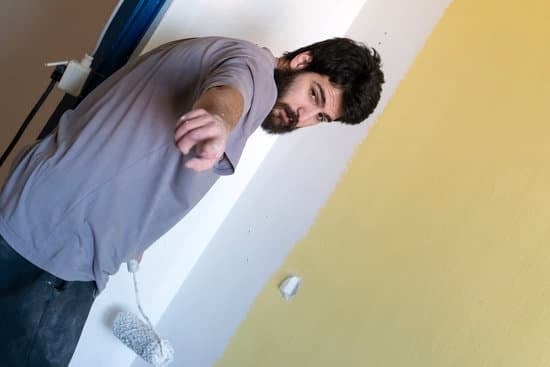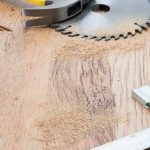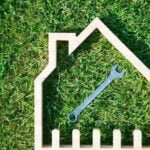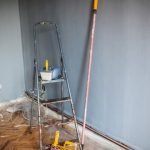Reflexes play a significant role in our everyday lives, whether we realize it or not. From catching a falling object to swerving out of the way of an unexpected obstacle, quick and efficient reflexes are crucial for our safety and well-being.
In the world of sports, athletes rely heavily on their reflexes to react swiftly and precisely. In this article, we will delve into the art of improving reflexes at home and explore the various benefits that come with sharpening these essential skills.
Understanding how reflex actions work is key to achieving improved reflexes. Our body’s sensory and motor pathways work together seamlessly to create rapid responses to stimuli. By exploring the science behind reflexes, we gain insight into how our brain processes information and initiates immediate reactions. This knowledge serves as a foundation for developing effective strategies towards enhancing our reflex abilities.
Having sharp reflexes goes beyond being able to react quickly; it extends to improving hand-eye coordination, reaction time, and overall physical performance. Whether you’re an athlete seeking an edge in your sport or someone wanting to increase their agility in everyday life, honing your reflex skills can offer numerous advantages.
Improved hand-eye coordination allows for better accuracy in tasks like catching or throwing objects, while enhanced reaction time can prevent accidents or mishaps that could result from delayed responses.
Understanding the science behind reflexes
The science behind reflexes is a fascinating subject that sheds light on how our bodies react to stimuli. Reflex actions are involuntary responses that occur without conscious thought, allowing us to quickly and automatically respond to potential dangers or changes in our environment. Understanding the sensory and motor pathways involved in reflexes can provide valuable insights into how we can improve them.
Reflex actions involve a complex pathway that begins with a sensory receptor, which detects the stimulus and sends signals to the spinal cord or brain. These signals then travel along motor neurons, which control our muscles, causing them to contract or relax in response to the stimulus. This entire process happens within milliseconds, allowing for fast and precise reactions.
One key component of reflexes is the concept of proprioception, which refers to our body’s ability to sense its position and movements in space. Proprioceptors are specialized sensory receptors located in muscles, tendons, and joints that provide feedback to the central nervous system about the body’s position and movement. This feedback is crucial for coordinating reflex responses since it allows us to quickly adjust our movements based on incoming stimuli.
Understanding the underlying science of reflexes can enhance our approach to training and improving them. By targeting specific sensory pathways or engaging in activities that promote better proprioception, we can help fine-tune these automatic responses. Additionally, knowing how different types of stimuli affect reflexive actions can guide us in selecting appropriate exercises and equipment for training purposes.
Key Points:
- Reflex actions involve a sensory receptor detecting a stimulus and sending signals to the spinal cord or brain.
- Motor neurons transmit these signals from the central nervous system to muscles, causing them to contract or relax.
- Proprioceptors play a vital role in reflexes by providing feedback about body position and movement.
- Targeting specific sensory pathways and improving proprioception can help enhance reflex actions.
- Selecting appropriate exercises and equipment based on an understanding of how stimuli affect reflexes is essential for effective training.
| Key Concepts | Description |
|---|---|
| Sensory Receptor | Detects stimulus and sends signals to the spinal cord or brain. |
| Motor Neurons | Transmit signals from the central nervous system to muscles. |
| Proprioception | Body’s ability to sense position and movement in space. |
| Sensorimotor Pathway | The pathway through which sensory information is processed and motor commands are executed. |
The benefits of having sharp reflexes
Improved reflexes offer a range of benefits that can enhance hand-eye coordination, reaction time, and overall physical performance. By understanding these benefits, individuals can gain a deeper appreciation for the importance of reflex training and be motivated to incorporate it into their daily routine.
One of the key advantages of having sharp reflexes is improved hand-eye coordination. This refers to the ability to synchronize visual information with motor skills. When reflexes are enhanced, individuals can react quickly and accurately based on what they see.
For example, in sports such as tennis or boxing, a split-second reaction can make all the difference between successfully returning a ball or punch, or missing it entirely. By practicing reflex exercises consistently, individuals can develop better hand-eye coordination, enabling them to respond swiftly and precisely in various activities.
Another benefit of improved reflexes is an enhanced reaction time. Reaction time is the period it takes to respond to a stimulus. It plays a crucial role in numerous sports and everyday situations where speed is essential.
Faster reactions allow individuals to stay one step ahead of their opponents and avoid potential accidents or dangers in daily life. Reflex training strengthens the neural pathways responsible for quickly transmitting signals from sensory organs to muscles for an immediate response. This speedier communication enables individuals to react swiftly and effectively without wasting precious milliseconds.
Overall physical performance also receives significant improvements through enhanced reflexes. Whether participating in sports or performing daily tasks, having sharp reflexes can help optimize movement efficiency while reducing the risk of injury. Quick reflexes aid balance and agility by allowing individuals to adapt rapidly to changing environments or unexpected events. This makes them less likely to stumble or fall when encountering unforeseen obstacles while running or navigating challenging terrains.
Assessing your current reflexes
Assessing your current reflexes is an important step in improving your reflex speed and agility. By understanding your baseline level of reflexes, you can track your progress and set realistic goals for improvement. There are several simple tests and exercises that you can do at home to evaluate your reflexes.
One common test is the ruler drop test. Start by holding a ruler vertically between your thumb and index finger, with the zero mark at the top. Have a friend hold their hand below the ruler, ready to catch it when you release it.
Without warning, let go of the ruler and have your friend try to catch it as quickly as possible. Measure the distance from the zero mark to where they caught it to determine your reflex speed. Repeat this test multiple times and record your best result.
Another test is the reaction ball test. Stand about six feet away from a wall and hold a reaction ball in one hand. Without looking directly at the ball, throw it against the wall and try to catch it with the other hand as quickly as possible after it bounces off. Time yourself using a stopwatch or phone timer to measure your reaction time. Repeat this test multiple times and record your fastest time.
In addition to these tests, there are also exercises that you can do to improve your reflex speed and agility. One popular exercise is ladder drills using an agility ladder. Set up an agility ladder on the ground or create one using tape or chalk on a flat surface. Practice moving quickly through the ladder by alternating stepping in each square with both feet or single-foot hops. This exercise challenges your coordination and helps improve footwork and quickness.
| Test/Exercise | Description |
|---|---|
| Ruler Drop Test | Holding a ruler vertically between thumb and index finger, have a friend catch it as quickly as possible when you release it. Measure distance caught. |
| Reaction Ball Test | Throw a reaction ball against a wall and try to catch it as quickly as possible after it bounces off. Time yourself to measure reaction time. |
| Ladder Drills | Using an agility ladder, practice moving quickly through the ladder by alternating stepping or hopping in each square with both feet or single-foot. |
Essential at-home tools for reflex training
Reflex training can be greatly enhanced with the use of certain tools and equipment at home. These tools help to challenge and stimulate the sensory and motor pathways involved in reflex actions, promoting faster response times, improved coordination, and enhanced physical performance. Here is a comprehensive guide to selecting and using essential at-home tools for reflex training:
Reaction Balls
Reaction balls are small rubber balls with uneven surfaces that bounce unpredictably upon hitting a hard surface. These balls are designed to improve hand-eye coordination, reaction time, and agility. To use a reaction ball, simply throw it against a wall or floor and react quickly as it bounces back in different directions.
Agility Ladders
Agility ladders consist of a series of flat rungs spaced evenly apart on the ground. They are excellent for improving footwork, speed, and coordination. Set up the agility ladder on a flat surface and perform various drills such as quick feet exercises or lateral movements by stepping in and out of each ladder rung.
Balance Boards
Balance boards are devices that challenge your sense of balance and stability by tilting or rocking as you stand on them. By improving your proprioception (awareness of your body’s position in space) and strengthening your core muscles, balance boards can significantly enhance your reflexes. Start with simple balancing exercises such as standing on one leg on the balance board, then progress to more challenging movements like squats or lunges.
When choosing these tools for reflex training at home, consider factors such as affordability, durability, and space requirements. It’s also important to start with beginner-friendly options before advancing to more advanced equipment as you improve your reflexes over time. Remember to prioritize safety when using any equipment by following proper instructions and taking necessary precautions.
Incorporating these essential tools into your reflex training routine can add variety and excitement to your workouts, making the process more enjoyable. By consistently practicing with these tools, you can effectively target different muscle groups and reflex pathways, leading to significant improvements in your overall reflexes and physical performance.
Incorporating daily exercises into your routine
Improving reflexes requires consistent practice and incorporating daily exercises into your routine is essential. By targeting different muscle groups and reflex pathways, you can enhance your reflexes effectively. This section will provide you with a variety of exercises that can help improve reflexes at home.
One type of exercise that targets reflex pathways is speed drills. These drills focus on improving reaction time by challenging the body to respond quickly to stimulus. One example of a speed drill is the agility ladder drill, where you move through a ladder-like structure placed on the ground with quick footwork. This exercise not only improves your ability to move swiftly but also enhances coordination between your eyes, brain, and muscles.
Another effective exercise for improving reflexes is plyometric workouts. Plyometric exercises involve rapid stretching and contracting of muscles to generate power. These explosive movements stimulate fast-twitch muscle fibers responsible for quick reactions. Box jumps, jump squats, and medicine ball throws are some examples of plyometric exercises that can be performed at home to enhance reflexes.
Incorporating these exercises into your routine can have significant benefits for improving reflexes. However, it is important to start slowly and gradually increase intensity to avoid injuries. Consistency is key, so make sure to set aside dedicated time each day for these exercises. With regular practice, you will notice improvements in your reflexes in daily life activities as well as in sports performance.
| Exercise | Description |
|---|---|
| Agility ladder drill | A ladder-like structure placed on the ground that challenges quick footwork |
| Box jumps | Jumping onto a raised platform or box, focusing on explosive power and landing safely |
| Jump squats | Squatting down and explosively jumping up, engaging leg muscles and improving reflexes |
| Medicine ball throws | Throwing a weighted medicine ball with force, activating fast-twitch muscle fibers for quick reactions |
The role of nutrition in reflex improvement
Good nutrition plays a crucial role in improving reflexes. Consuming a balanced diet and staying hydrated can have a significant impact on neurological health, which directly affects reflexes. When it comes to enhancing reflexes, it is important to fuel the body with the right nutrients and maintain proper hydration levels.
A balanced diet rich in vitamins, minerals, and antioxidants is essential for optimal neurological function. Antioxidants, found in fruits and vegetables, help protect the cells in the nervous system from damage caused by free radicals. Including foods high in omega-3 fatty acids, such as fish, nuts, and seeds, can also support brain health and improve reflex speed.
Hydration is equally important for maintaining optimal reflex performance. Dehydration can negatively affect brain function and lead to slower reaction times. It is recommended to drink an adequate amount of water throughout the day to ensure proper hydration.
Here are some key foods that can specifically support neurological health and improve reflexes:
- Berries: Blueberries, strawberries, and blackberries are rich in antioxidants that help protect neurons from oxidative stress.
- Fish: Fatty fish like salmon, tuna, and sardines are high in omega-3 fatty acids that support brain health.
- Nuts and seeds: Almonds, walnuts, flaxseeds, and chia seeds are packed with omega-3 fatty acids and antioxidants.
- Leafy greens: Spinach, kale, and broccoli are rich in vitamins A and C which promote brain health.
- Whole grains: Brown rice, quinoa, oats, and whole wheat bread provide a steady supply of energy for the brain.
- Avocados: These nutrient-dense fruits contain healthy fats that support brain function.
- Water: Staying properly hydrated by drinking water throughout the day is essential for optimal reflex performance.
By incorporating these foods into your diet while maintaining proper hydration levels, you can support and enhance your neurological health, thereby improving your reflexes. It is important to remember that nutrition is just one piece of the puzzle, and a holistic approach that includes exercise, rest, and other lifestyle factors is necessary for overall reflex improvement.
Other lifestyle factors that affect reflexes
The Impact of Quality Sleep on Reflexes
One often overlooked aspect of improving reflexes is the crucial role that quality sleep plays. A lack of sleep can negatively impact our reaction time and cognitive function, which are essential for quick reflex responses. When we are sleep deprived, our brain’s ability to process information and make split-second decisions becomes impaired. This can significantly affect our reflexes and overall physical performance.
To optimize reflex performance, it is recommended to aim for 7-9 hours of uninterrupted sleep each night. Developing a bedtime routine that promotes relaxation and creating a comfortable sleep environment can help improve the quality of your sleep. Avoiding electronic devices before bed and practicing techniques like deep breathing or meditation can also aid in falling asleep faster and achieving deeper, more restful sleep.
The Role of Stress Management in Reflex Improvement
Stress has a profound impact on our mind-body connection, including our reflexes. When we are stressed, our body releases cortisol, a hormone that activates the fight-or-flight response. This hormonal surge affects not only our mental state but also our physiological responses, including reflex actions. High levels of stress can impair concentration, decision-making abilities, and overall physical performance.
Incorporating stress management techniques into your daily routine can help improve your reflexes. Activities such as yoga, meditation, deep breathing exercises, or engaging in hobbies you enjoy can all help reduce stress levels and promote optimal functioning of the nervous system. Additionally, establishing healthy coping mechanisms for managing stressors in life is an important part of maintaining optimal reflex performance.
Avoiding Harmful Substances for Optimal Reflex Performance
The consumption of harmful substances such as alcohol and recreational drugs can have detrimental effects on reflex performance. These substances impair cognitive function, coordination skills, and reaction time-essential components of having sharp reflexes. It is crucial to avoid or limit the intake of these substances if you want to improve and maintain your reflexes.
Alcohol, in particular, acts as a depressant on the central nervous system, slowing down neural processing speed. This leads to delayed reflex responses and decreased overall physical performance. Similarly, recreational drugs can have varying effects on the central nervous system, impairing reflexes and coordination. To optimize your reflex performance, it is advisable to avoid harmful substances altogether or consume them responsibly and in moderation.
By prioritizing quality sleep, incorporating stress management techniques into daily life, and avoiding harmful substances, you can optimize your reflex performance for everyday tasks and sports activities. Taking care of both your physical and mental well-being through these lifestyle factors will contribute to enhanced reflexes and overall improved functioning of your mind-body connection.
Mental exercises for reflex enhancement
Mental exercises play a crucial role in improving reflexes and enhancing overall performance. By training the mind to sharpen focus and response time, individuals can greatly enhance their reflex abilities. This section will explore various mental exercises, such as mindfulness techniques, meditation, and mental visualization exercises, that can be incorporated into a daily routine to improve reflexes at home.
Mindfulness Techniques
Mindfulness is a practice that involves focusing one’s attention on the present moment while acknowledging and accepting one’s thoughts, feelings, and sensations without judgment. Incorporating mindfulness techniques into reflex training can help individuals develop heightened awareness of their body and surroundings, allowing for quicker reaction times.
One simple mindfulness exercise to improve reflexes is to engage in mindful breathing. By focusing on slow and deep breaths while consciously relaxing the body, individuals can increase their ability to stay present and react swiftly.
Meditation
Meditation is another effective mental exercise that can significantly improve reflexes. Regular meditation practice has been shown to enhance concentration, cognitive function, and overall brain health. To incorporate meditation into reflex enhancement training, individuals can find a quiet and comfortable space to sit or lie down.
They should then close their eyes and focus on their breath or a specific point of concentration while letting go of any distracting thoughts. Engaging in even just a few minutes of daily meditation can help calm the mind, reduce stress levels, and enhance overall mental clarity – all of which contribute to sharper reflexes.
Mental Visualization Exercises
Mental visualization exercises involve mentally rehearsing desired outcomes or actions in vivid detail. These exercises allow individuals to mentally simulate specific movements or scenarios, effectively training their minds for faster reflexive responses when faced with similar real-life situations.
For example, an athlete wishing to improve their sports-specific reflexes could visualize themselves performing quick reactions on the field or court. By mentally envisioning themselves successfully executing precise movements and decisions, athletes can enhance their muscle memory, focus, and overall reflex abilities.
Tracking and monitoring progress
Tracking and monitoring progress are crucial aspects of improving reflexes at home. By establishing benchmarks, setting goals, and utilizing technology or apps, individuals can effectively measure their improvements in reflexes over time. This section will explore the importance of tracking progress, provide tips on how to establish benchmarks and set goals, and discuss various technological tools and applications that can be used for monitoring reflex enhancement.
The Importance of Tracking and Monitoring Progress
Tracking and monitoring progress allows individuals to evaluate their current level of performance, identify areas for improvement, and stay motivated throughout their reflex training journey. By visually seeing their progress over time, individuals can witness firsthand the results of their hard work and dedication. Additionally, tracking progress provides a sense of accomplishment and satisfaction as individuals see improvements in their reaction time, hand-eye coordination, and overall physical performance.
Establishing Benchmarks and Setting Goals
To effectively track progress in reflex improvement, it is essential to establish benchmarks and set attainable goals. Benchmarks serve as a starting point for measuring progress while goals provide a target for individuals to strive towards. When establishing benchmarks, individuals can conduct initial agility tests or timed exercises to assess their baseline reflex speed and agility. These measurements can be recorded as a reference point for future comparisons.
Setting specific, measurable, achievable, relevant, and time-bound (SMART) goals is key to effective progress tracking. For example, an individual may set a goal to improve their reaction time by 0.1 seconds within three months. By setting concrete goals with specific targets and deadlines, individuals have a clear vision of what they aim to achieve through their reflex training.
Utilizing Technology or Apps for Monitoring Reflex Enhancement
Technology has revolutionized the way we track our health-related goals, including reflex enhancement. There are various technological tools and applications available that can assist in monitoring improvements in reflexes over time.
Some apps offer specialized reflex training programs with built-in exercises, progress tracking features, and virtual training coaches. These apps provide guided workouts, customizable training plans, and the ability to track reaction times and accuracy. By utilizing these apps, individuals can have a structured approach to their reflex training and track their progress in real-time.
In addition to specific reflex-training apps, wearable devices like fitness trackers or smartwatches often have features that can measure metrics like heart rate variability, movement speed, and reaction time. These devices can provide valuable insights into an individual’s physical performance during exercises targeting reflex improvement.
To get the most out of technology or apps for monitoring reflexes, it is important to research and select tools that align with personal goals and preferences. Regularly using these tools can help individuals stay accountable, motivated, and focused on their journey towards improved reflexes.
Conclusion
In conclusion, improving reflexes at home can have a profound impact on daily life and sports performance. By understanding the science behind reflexes and their connection to hand-eye coordination, reaction time, and overall physical performance, individuals can begin to assess their current reflex abilities. Utilizing essential at-home tools such as reaction balls, agility ladders, and balance boards can further enhance reflex training.
Incorporating daily exercises into your routine is crucial for continued improvement. By targeting different muscle groups and reflex pathways through speed drills and plyometric workouts, individuals can build agility and speed. It is important to remember that nutrition plays a significant role in supporting neurological health and enhancing reflexes. A balanced diet and proper hydration are key for optimal performance.
Furthermore, various lifestyle factors such as quality sleep, stress management, and avoiding harmful substances are vital for optimizing reflex performance. Mental exercises like mindfulness techniques, meditation, and mental visualization exercises also contribute to sharpening focus and response time.
To track progress over time, establishing benchmarks and setting goals is essential. Utilizing technology or apps can aid in measuring improvements in reflexes. Commitment to regular practice is crucial for continued improvement at home.
Ultimately, the lifelong benefits of reflex training cannot be underestimated. Improved hand-eye coordination, reaction time, agility, and overall physical performance can greatly enhance daily life activities as well as sporting endeavors. Therefore, it is encouraged that readers commit to regular practice so they may continue to experience the positive effects of improved reflexes at home.
Frequently Asked Questions
How can I improve my reflexes naturally?
There are several natural ways to improve your reflexes. One of the most effective methods is through regular exercise and physical activity. Engaging in activities that require quick reactions, such as playing sports or practicing martial arts, can help enhance your reflexes over time.
Another way to boost your reflexes naturally is by consuming a healthy diet that includes foods rich in antioxidants and essential nutrients, like fruits, vegetables, and lean proteins. These nutrients support proper neural function, which can contribute to improved reflexes. Additionally, ensuring you get enough quality sleep is crucial for optimal brain function and reaction times.
How can I improve my reflexes fast?
While there are no magical shortcuts to instantly improve your reflexes, there are things you can do to help expedite the process. One approach is by focusing on specific exercises that target reaction time and coordination. For example, playing video games like shooter games or engaging in activities like boxing or tennis can challenge your reflexes and train them to respond faster.
Moreover, simulating real-life scenarios that require quick responses can also help hone your reflexes in a fast way. These include activities such as juggling or catching objects thrown at different angles or speeds.
Is it possible to improve reflexes?
Yes, it is absolutely possible to improve your reflexes with consistent practice and dedication. Reflexes are not fixed traits; they can be developed and enhanced through training.
By consistently challenging yourself with activities that require quick reactions and working on exercises designed specifically for enhancing reflexes, you can make noticeable progress over time. It’s important to remember that improvement may vary from person to person depending on factors like age, genetics, and overall health condition but with patience and persistence, everyone has the potential to enhance their reflexes to some degree.

I’m thrilled to have you here as a part of the Remodeling Top community. This is where my journey as an architect and remodeling enthusiast intersects with your passion for transforming houses into dream homes.





